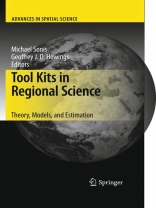Regional Science is now more than 50 years old; in the last two decades, significant advances in methodology have occurred, spurred in large part by access to computers. The range of analytical techniques now available is enormous; this books provides a sampling of the toolkit that is now at the disposal of analysts interested in understanding and interpreting the complexity of the spatial structure of sub- national economies. The set of tools ranges from the more traditional (input-output) to new developments in computable general equilibrium models, nonlinear dynamics, neural modelling and innovation.
Innehållsförteckning
Complex Socio-Economic Systems in Regional Science.- New Developments in Input-Output Analysis.- Interregional Computable General Equilibrium Models.- Optimality Versus Stability: Pattern Formation in Spatial Economics.- Urban and Hinterland Evolution Under Growing Population Pressure.- Socio-Spatial Dynamics and Discrete Non-Linear Probabilistic Chains.- Principles of Neural Spatial Interaction Modeling.- Quick but not so Dirty ML Estimation of Spatial Autoregressive Models.- Innovation Diffusion Theory: 100 Years of Development.- Urban Economics at a Cross-Road.- Conclusion.












